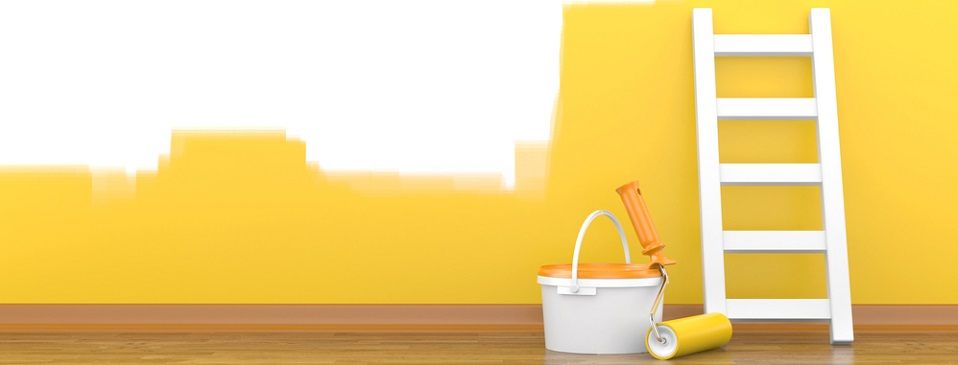You’ve just moved into your dream home but there’s a problem: the living room walls are a hideous shade of beige. Or perhaps you’re about to put your property on the market and know your daughter’s bright pink bedroom isn’t exactly a selling point.
Either way, a fresh splash of color totally transforms drab, washed-out walls. A new paint job makes any room instantly more liveable and can even increase the value of your home.
Of course, you could hire someone to do the painting for you. But why hire a professional if you can do the job perfectly well yourself? Follow the five simple steps below to painting interior walls.
1. Prepare the room.
First up, there are a few things you will need to do to avoid unnecessary mess. If possible, move all the furniture out of the room. Otherwise, items should be stacked in the center of the room and covered with a cloth. Also, remove any wall or light fixtures that will get in your way while painting. Next, cover the floor with a canvas tarp or drop cloths. Keep all your tools in one corner of the room so they are out of your way during painting.
2. Prepare the walls.
Wash the walls to remove any grease or dirt that will get in the way of your new paint job. Next up: sand and scrape. You’ll need to smooth the walls down by scraping away any old paint that is loose or flaking away and sand over the top for a smooth surface. Any glossy areas will also need to be sanded down to ensure proper adhesion, then wipe down any sanding dust. Finally, use painters tape to mask over the trim, windows, and doorframes. This will make sure you leave sharp, straight lines during the painting process.
3. Get painting.
As a guide, synthetic brushes and rollers are usually used with water-based paint. Alternatively, oil-based paints can be used with either natural or synthetic rollers and brushes. Ask your retailer for the right combination of tools. For the center of walls and larger areas, a roller is usually the way to go. Apply the paint with light, even pressure. Use the W method: starting in a corner, paint in a W pattern then fill in the gaps horizontally without lifting the roller. Move onto the next section until the wall is finished.
When using brushes, dip the bristles one-third of the way into the paint and tap it against the side of the tin to remove excess. Remember you will most likely need to apply a second coat – but make sure the paint has enough time to dry between applications.
4. Mind the details.
Once the walls have dried, it is time to fill in the details. Remove the tape from the trim and then tape around it. Using an angled brush, begin by painting the ceiling trim and working your way down. Paint around the door frames and windows before moving on to the skirting. Again, you may need to apply a second coat. Remove the tape once the paint is dry.
5. Clean up.
To make sure your brushes stay in good condition, the cleaning process is essential. For water-based paints, dip the brushes in soapy water. For oil-based paints, you will need paint thinner or mineral solvents. Swirl the brushes around, pour out the dirty water and replace. Repeat this process until the brushes are clean. If possible, try to store the brushes in their original packaging to ensure the bristles remain straight.





1 Comment
Very Nice!
Painters Tape as result of use, the houses carry a beautiful design. I used it on the doors and walls of my house. The efforts you have put in to create the posts are quite interesting. I am very happy to get this kind of thing. Thank you for our safety tips.